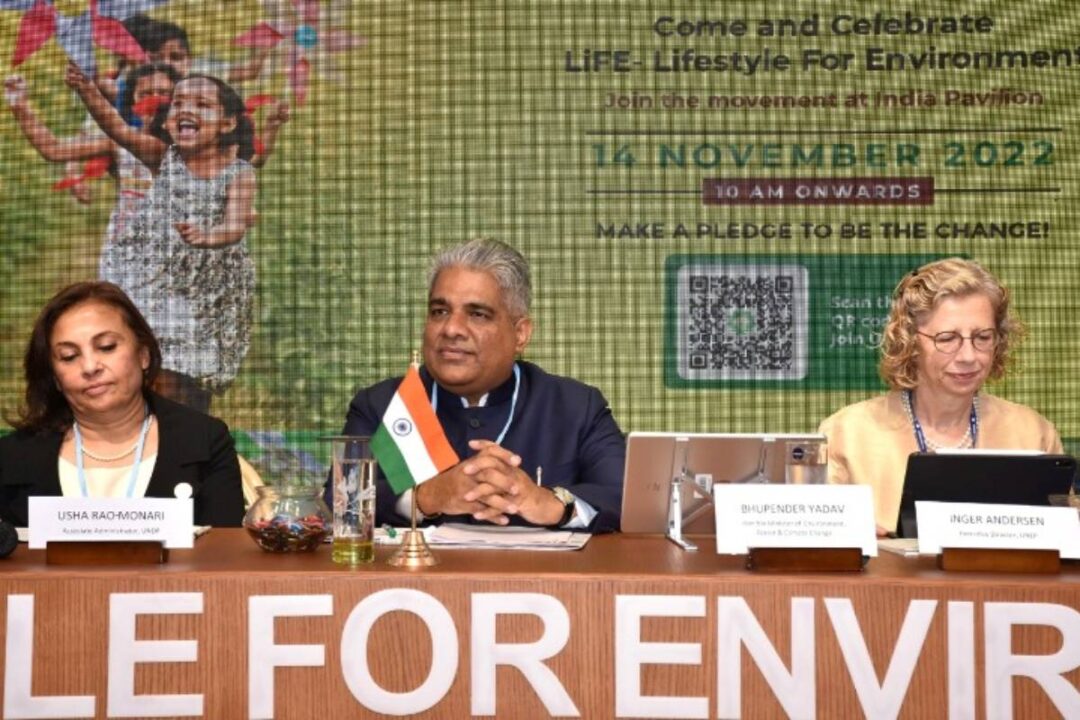
SHARM EL-SHEIKH, Egypt: Bhupendra Yadav, Minister for Environment Forest and Climate change, Government of India, submitted India’s Long-Term Low Emission Development Strategy (LT-LEDS) on Monday, November 14, during the 27th Conference of Parties (COP 27) at Sharm el-Sheikh, Egypt.
Last year during COP 26, the Prime Minister of India introduced the long-term goal of India, that is, becoming a net zero country by 2070. Apart from that, four other updated nationally determined contributions introduced that day include reaching 500 GW non-fossil energy capacity by 2030, meeting 50 per cent of energy requirement through renewables, cutting projected carbon emissions by one billion tonnes and reducing emission intensity by 45 per cent at 2005 level, all to be achieved by 2030.
Key elements of the LT-LEDS strategy include the low-carbon development of electrical systems in India, the development of integrated, efficient and inclusive low-carbon transport and industrial systems and the promotion of energy and material efficiency in buildings. Apart from that, the strategy also focuses on CO2 removal and related engineering solutions, increasing forest and vegetation cover while keeping in mind the economic and financial aspects of low-carbon development for the country.
The first key element of the LT-LEDS strategy includes several sub-elements such as expanding renewables and strengthening the grid, exploration and promotion of low carbon technologies, demand side management, rational use of fossil fuel that does not compromise the energy security of the country, and lastly, determining green taxonomy and optimum energy mix.
The second key element is greening the transport sector, especially road transport, including passenger and freight, which have a lion’s share with a massive 92 per cent in the transport sector’s total emissions. LT-LEDS strategy encourages improved fuel efficiencies, phased transition to clean fuels, and model shift towards less polluting modes of public transport. It also includes electrification across different modes and traffic management.
For the sustainable development of urban systems in India, this strategy aims to mainstream adaptation measures in the built environment, promoting resourcing efficiencies in system guidelines, policies and bylaws. The strategy also aims to introduce the elements of climate resilience in the building design and construction of all future urban systems. Along with it, the strategy stresses ensuring low-carbon municipal service delivery through resource efficiency and management of water, solid and liquid waste.
Reducing carbon emission from industrial system LT-LEDS aims to increase the use of natural and bio-based materials, fuel switching and use of electricity in the manufacturing sector as far as possible, enhancing material efficiencies and recycling, thus strengthening the concept of circular economy. Green hydrogen technology and low carbon sustainable growth of micro, small and medium enterprises have been given due stress in the strategy.
For the development of CO2 removal technology, the strategy seeks international support in technology transfer, financial support and cooperation in research and innovation.
The country’s commitment towards conservation and promotion of biodiversity is also included in the LT-LEDS. It also includes restoration, conservation and management of plant, animal and microbial genetic resources and trees outside forests and simultaneously strengthening the institutional framework in the states concerning this sector.
However, the strategy makes it very clear that the country’s commitment towards transition towards a low-carbon economy should not compromise energy security, energy access and employment opportunities, thus following the principles of climate justice that India stands for. India recognises that climate change is a global problem and all countries should come together in times of crisis. But global climate action should be based on the principle of equity, and the concept of common but differential responsibilities and respective capabilities (CBDR-RC) enshrined in the United Nations Framework Convention on Climate change (UNFCCC).

